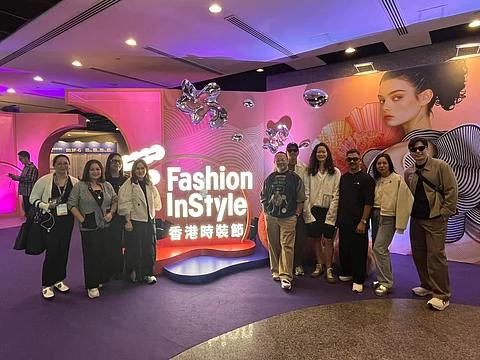
- NEWS
- the EDIT
- COMMENTARY
- BUSINESS
- LIFE
- SHOW
- ACTION
- GLOBAL GOALS
- SNAPS
- DYARYO TIRADA
- MORE

The Philippines took part in the Hong Kong Trade Development Council (HKTDC)’s Fashion in Style, which ran from 27 to 30 April at the Hong Kong Convention and Exhibition Centre. It was a monumental event that served as an all-in-one sourcing platform, featuring everything from garments and designer labels to upstream products like fabrics and clothing accessories, as well as the latest fashion technologies.
HKTDC extended an invitation to a buying mission to members of the Philippine Fashion Coalition (PFC). Themed zones were designed to meet diverse industry needs. Traditional zones like Men in Style, Women in Style and Knitwear offered basic mass merchandise, while specialized zones namely Athleisure, Bridal & Evening Wear, Kids’ Wardrobe, Salon Lingerie & Loungewear and Urban Clothing featured the latest designs. The highlighted Fashion Tech zone focused on showcasing innovative fashion technologies and trade services.
The Philippine delegation led by PFC vice president Carmina Sanchez Jacob and secretariat JR Arce brought fashion, bag and accessories designers, namely, Jo Ann Bitagcol, Arnel Papa, Jor-el Espina, Dino Lloren, Dexter Alazas, Emi Englis (president, Davao Fashion Design Council), Maria Aleta dela Calzada, Tatah Costales of Ate by Tata Cebu Philippines, Christine Virtucio of Virtucio and Tessa Nepomuceno of Calli Bags.
The highlighted new zone was NEXT@Fashion InStyle — a groundbreaking initiative reshaping the future of fashion and design. The hub showcased innovative materials moving the garment industry fashion-forward.
Global suppliers presented cutting-edge developments, allowing manufacturers and designers to redefine style and sustainability. Participating in this visionary endeavor was the b.Loom project by the Davao Fashion Design Council (DFDC) which represented the PFC in collaboration with DoST-PTRI for the booth.
The b.LOOM Project is an initiative of the DFDC Foundation, Inc. to refresh and feature Davao’s rich artisanal weaving traditions. It connects designers with local weaving communities focusing on sustainable practices, integrating technology and modern design with traditional crafts. This was sponsored by DTI-CITEM as well.
The future of fashion in Asia is independently and slowly detaching from the West. Resource sources are strongly and interactively opening their doors to its to its neighbors and in the region. The sign of the times is challenging the parameters and boundaries of the laws of supply and demand, opening more avenues for potential growth.
